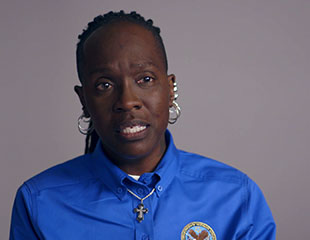MITCH STROHM@MITCHSTROHM
MAY 14, 2019
At Bankrate we strive to help you make smarter financial decisions. While we adhere to strict editorial integrity, this post may contain references to products from our partners. Here’s an explanation for how we make money.
Having bad credit can feel like getting a flat tire on your way toward a solid financial future. It can also make you feel like you’re the only one stranded on the side of the road with no help in sight. You could convince yourself that things may have been the same had you taken a different route. But even if your situation was unavoidable, it doesn’t make it ideal.
The good news? You’re not the only one with blemishes on your credit record, and you have options for getting your finances back on track. Choosing a bad credit loan could help you bridge the gap between a long-term plan and a practical step toward rebuilding credit.
What are bad credit loans?
Bad credit loans are a type of loan offered to borrowers who have a less-than-average credit score. These loans can be either secured (backed by collateral like a home or car) or unsecured. Interest rates, fees and terms for these types of loan products all vary by lender.
Check Your Personal Loan Rates
Answer a few questions to see which personal loans you pre-qualify for. The process is quick and easy, and it will not impact your credit score.
GET STARTED
Various banks, credit unions and online lenders offer loans to those with weak credit, but the threshold for what’s considered a “creditworthy borrower” varies by institution. Some lenders have stricter requirements than others, which makes it important to shop around thoroughly when looking for a loan.
How do you know if you have bad credit? Check out these FICO score ranges to see where you land:
Exceptional: 800-850
Very good: 740-799
Good: 670-739
Fair: 580-669
Very poor: 300-579
Scores below 669 are considered to be below average or poor, and 34 percent of Americans fall into this category, according to credit bureau Experian.
How do bad credit loans work?
Personal loans for bad credit can be used for a wide range of purposes,
from debt consolidation to financing major purchases.
But it’s important to note that borrowers with poor credit are seen as riskier in the eyes of lenders. In exchange for taking on additional risk, lenders generally charge higher interest rates and fees than they would someone with excellent credit.
Legitimate lenders will typically check your credit history, financial situation, ability to repay and other information before extending a loan offer.
Does having bad credit mean I’m being punished for bad financial habits?
Keep in mind that having bad credit doesn’t always mean that someone was irresponsible. There are a myriad of life circumstances that can negatively impact your finances and set you back – such as unexpected medical bills, loss of employment, a natural disaster and more. Having a low credit score can also be due to the fact that you’re just starting out and have yet to build any credit. The bottom line: many people find themselves having a low credit score through no fault of their own.
But regardless of the circumstances that lead to it, there are some general side effects of having bad credit.
Higher interest rates
A lower credit rating could mean a higher risk for default. Lenders compensate by setting interest rates higher to protect their investment. So, borrowing a large amount could mean paying a large amount of interest over time.
Lower odds of loan approval
If you have an unusually low credit score, you’ll likely see fewer lenders willing to take a chance on approving you for a loan. This is the unfortunate predicament that many with poor credit find themselves in – such as a student applying for a loan or a potential borrower hit with an unexpected medical bill. In this case, getting a cosigner is usually a good route to take.
Difficulty renting an apartment or getting a phone contract
Even if you’re trying to rent an apartment or sign a smartphone contract – neither of which would call for a loan – having bad credit could still potentially cause a problem. Landlords and phone companies could also check your credit before agreeing to do business with you.
Paying more for security deposits
Utility companies – similar to landlords and phone providers – can check your credit as well. You may be asked to pay a security deposit, or a higher security deposit, depending on your credit score and the company’s policy. Since you wouldn’t be paying interest on utilities, the one-time upfront fee works the same as insurance would for the utility provider, as they could refuse to return your security deposit if you don’t pay your bills.
Options for people with bad credit
There are two main options when it comes to getting personal loans with bad credit — secured and unsecured.
Secured loans require the loan amount to be backed by collateral, like a home or car. This is often a good option for borrowers who can’t qualify for an unsecured loan. And because it’s collateralized, secured loans generally offer more favorable rates, higher loan limits and better terms. But there’s a caveat: if you default on the loan, you could risk losing your collateral.
Unsecured loans don’t require any collateral. The rate you receive is based on your creditworthiness. Since it’s not secured by an asset, this type of loan typically comes with a higher interest rate and lower loan limits.
Fortunately, whatever your needs, there’s likely a lender that’s a good fit. Here are just a few of the many lenders that offer personal loans for poor credit:
Upgrade: This online lender offers fixed-rate personal loans to those with less than average credit for things like debt consolidation, home improvement and major purchases. Its unsecured personal loans have interest rates ranging from 7.99 percent to 35.89 percent APR with loan amounts from $1,000 to $50,000 and lending terms of 36 or 60 months. Origination fees range from 1.5 percent to 6 percent.
Upstart: Founded by former Google employees, Upstart’s algorithm uses more than just your credit score to determine creditworthiness. It lends based on education and experience for purposes including debt consolidation, personal expenses and college costs. Rates range from 7.69 percent to 35.99 percent APR with loan terms of 36 and 60 months and amounts from $1,000 to $50,000. One-time origination fees run from 0 percent to 8 percent.
OneMain Financial: OneMain is another lender who accepts applicants with fair to poor credit. Loan rates range from 16.05 percent to 35.99 percent with lending amounts varying from $1,500 to $30,000. You can find 24-, 36-, 48- and 60-month terms.
TD Bank: If you’re looking for a full-service bank that offers secured and unsecured loans, TD Bank might be a good option. It offers loan amounts from $2,000 to $50,000 with rates from 6.99 percent to 18.99 percent. Repayment terms of 12 to 60-months are available.
Choosing a bad credit lender
Despite the obstacles, having a low credit score doesn’t mean getting a loan is impossible. What it does mean is you may need to utilize a little more strategy in selecting a lender. You can be approved through a short-term lender, online lender, bank or credit union. You have plenty of options to choose from and convenient ways of searching for them. But if you decide to do a little more digging on your own, it helps to know where to start.
Competitive interest rates are only one piece of the puzzle. Your goal is also to identify supportive resources that help you chip away at debt and ultimately get back to building your credit score. Here are a few things to think about when considering your loan options:
Types of bad credit loans
Installment loans: These loans are for a specific sum of money that you repay with interest in equal monthly installments over the life of the loan.
Payday Loans: While this type of short-term loan with high APRs doesn’t require collateral, you must repay it by your next payday.
Cash advances: Similar to payday loans, cash advance lenders most likely won’t check your credit, but these are most useful if you have a credit card or steady income. Not available in all states.
Bank Agreements: Per your bank’s policy, they may approve you for a short-term loan or minimal overdraft agreement. This is, of course, dependent on your banking history and ability to keep your account open.
WHAT TO LOOK FOR IN A LENDER
QUESTIONS TO ASK
Customer service/assistance
Do they have a full online/mobile service?
Is there a comprehensive pre-approval process?
Are there service agents ready to speak with me whenever needed?
Service reach
Are they licensed in all 50 states, and where are the branch locations?
What’s the minimum credit score to receive service?
How is underwriting handled, and will they consider alternative credit data?
Flexibility
Are there a variety of secured and co-signed loans options?
Do they offer zero and low down payment options?
Are they willing to waive lender fees?
How to fix credit in order to get a better loan
The best way to get better terms and rates on a personal loan is to improve your credit. And while there’s no quick fix for bad credit, even small increases in your credit score can help lower the rates you receive on a loan.
It’s important to remember that boosting your credit takes time. Here are several things you can do to get started on the path to a higher credit score:
Pay bills on time, every time. This doesn’t just apply to your credit card bills, but also to any other debts, including auto loans, mortgages and student loans.
Watch your credit utilization ratio. Keeping an eye on your balances relative to your total credit limit is crucial for improving credit. According to Experian, lenders typically like to see a ratio of 30 percent or less.
Use credit score boosting programs. Experian Boost and UltraFICO connect to your bank account to grab utility and other financial information. This is especially beneficial for those with a thin or no credit profile.
Leave unused credit cards open. As long as there is no annual fee associated with an unused card, leaving it open can be beneficial to your credit utilization ratio.
Limit your credit applications. A “hard” inquiry is made on your credit report every time you apply for a new line of credit, which lowers your score temporarily.
Fix errors on your credit report. By law, you’re entitled to one free credit report from each of the three major credit bureaus per year. Correcting any blemishes on your report can help you improve your credit standing overall.
Is there risk in bad credit loans?
As a borrower, you take on some risk whenever getting a personal loan. If you default on a secured personal loan, for instance, the lender could take your collateral, and your credit score could take an even bigger hit. Defaulting on an unsecured loan could mean being pursued by a collections agency, or it could result in your wages being garnished if the lender decides to take legal action.
You also chance racking up even more debt if you don’t pay bills on time. That’s especially true with a riskier payday loan, which may charge as high as 400 percent interest, according to the Consumer Financial Protection Bureau.
Scams targeting borrowers with poor credit seeking loans are also a concern. Fortunately, these fraudulent lenders throw up some red flags that are easy to recognize. Here are some of the signs you might be walking into a scam:
Guarantees without approval. Reputable lenders generally want to see your credit report, income and other information before extending an offer. If you come across a lender who isn’t interested in your payment history, you might be getting lured into a bad situation.
No registration in your state. The Federal Trade Commission requires that lenders be registered in the state where they do business.
Poor advertising methods. Phone calls, snail mail and door-to-door solicitation are no longer considered legitimate advertising streams for trustworthy lenders. Look for lenders that advertise online instead.
Take steps to check on a lender before you decide to submit an application. Read online reviews and look at ratings from companies like the Better Business Bureau in order to get a full picture.
Protecting your credit score after laying fresh ground
Building credit and boosting your credit score aren’t always synonymous, but they are related. Once you’ve regained some financial footing via a bad credit loan (and you will), you can then continue to practice good habits and set up protections around your credit score.
Three quick tips:
Make automated payments: Start by setting up automatic payments for your bills through your bank. This will relieve you of the burden of having to remember due dates. And it will get you into a consistent rhythm of repayment, which is music to a creditor’s ears.
Cash in, cash out: Be strategic with your credit cards and pay for more purchases using cash. Your budget shouldn’t allow you to spend beyond what you earn. Using cash will help you keep track.
Keep an eye on your accounts: Even when you’re not overly active, continue to check your FICO score and credit card accounts regularly. This will help you maintain an ownership mentality, monitor spending and keep annual fees from sneaking up on you.
Check Your Personal Loan Rates
Answer a few questions to see which personal loans you pre-qualify for. The process is quick and easy, and it will not impact your credit score.
GET STARTED
The bottom line
Starting over financially most likely means starting over personally in some areas as well, and that’s nothing to be ashamed of. A lack of knowledge, adequate resources, or access to funds to pay off debt can have a swift impact on your credit score. But remember, bad credit isn’t irreversible. You still have options toward building a functional financial life; and a bad credit loan could be a viable one.








